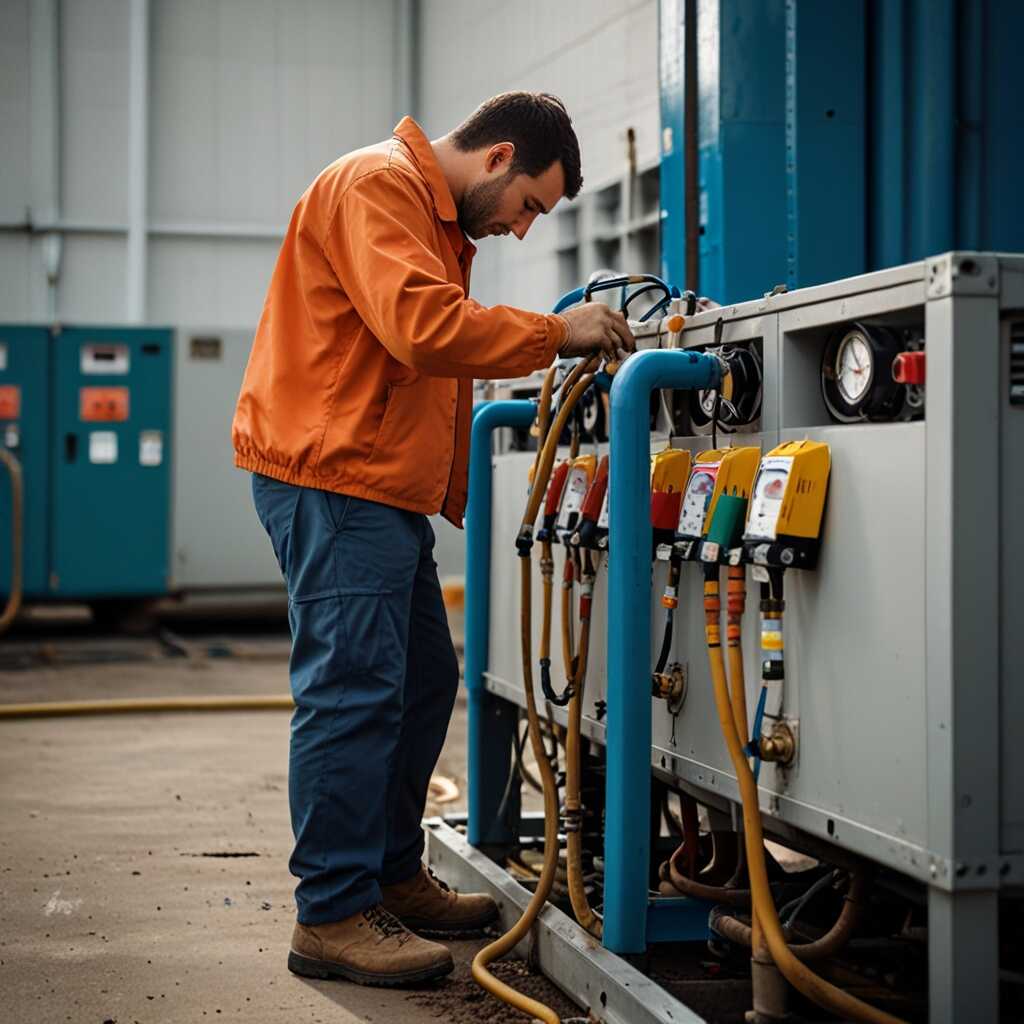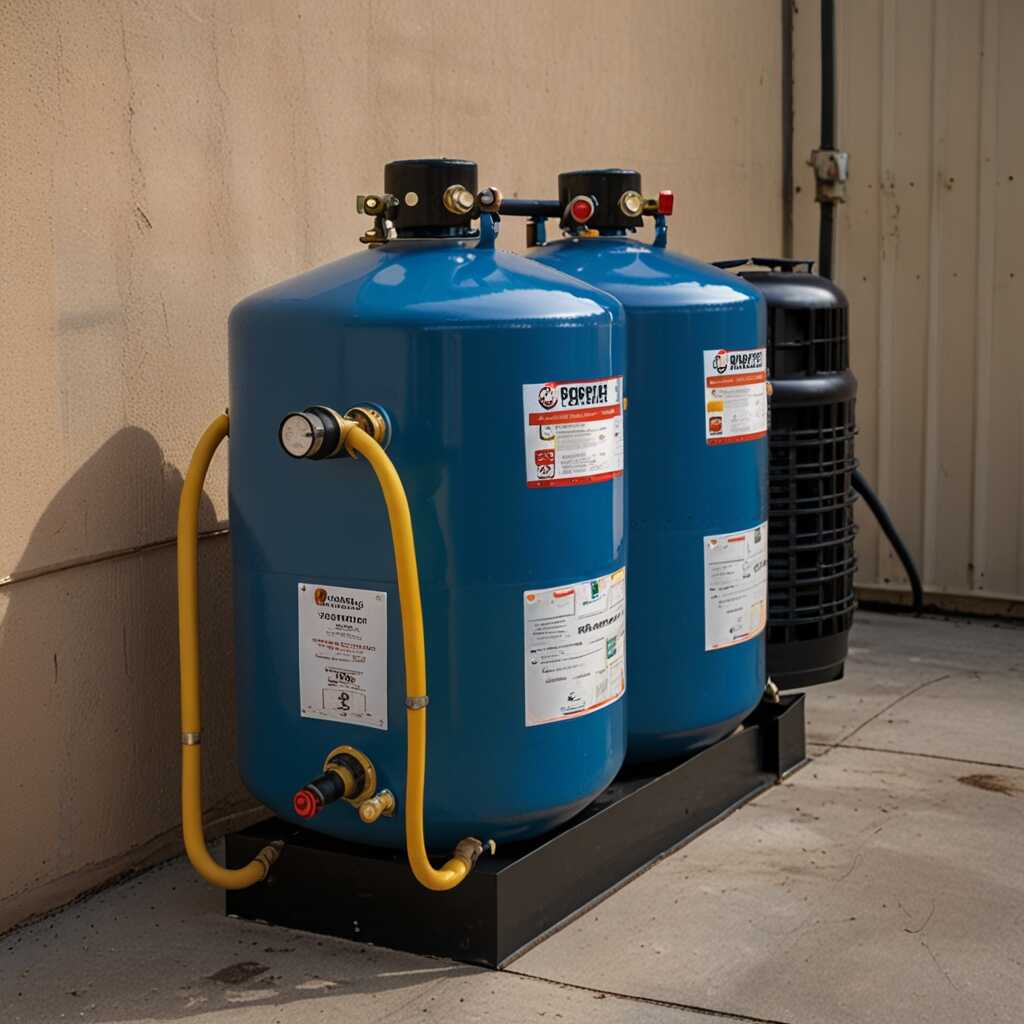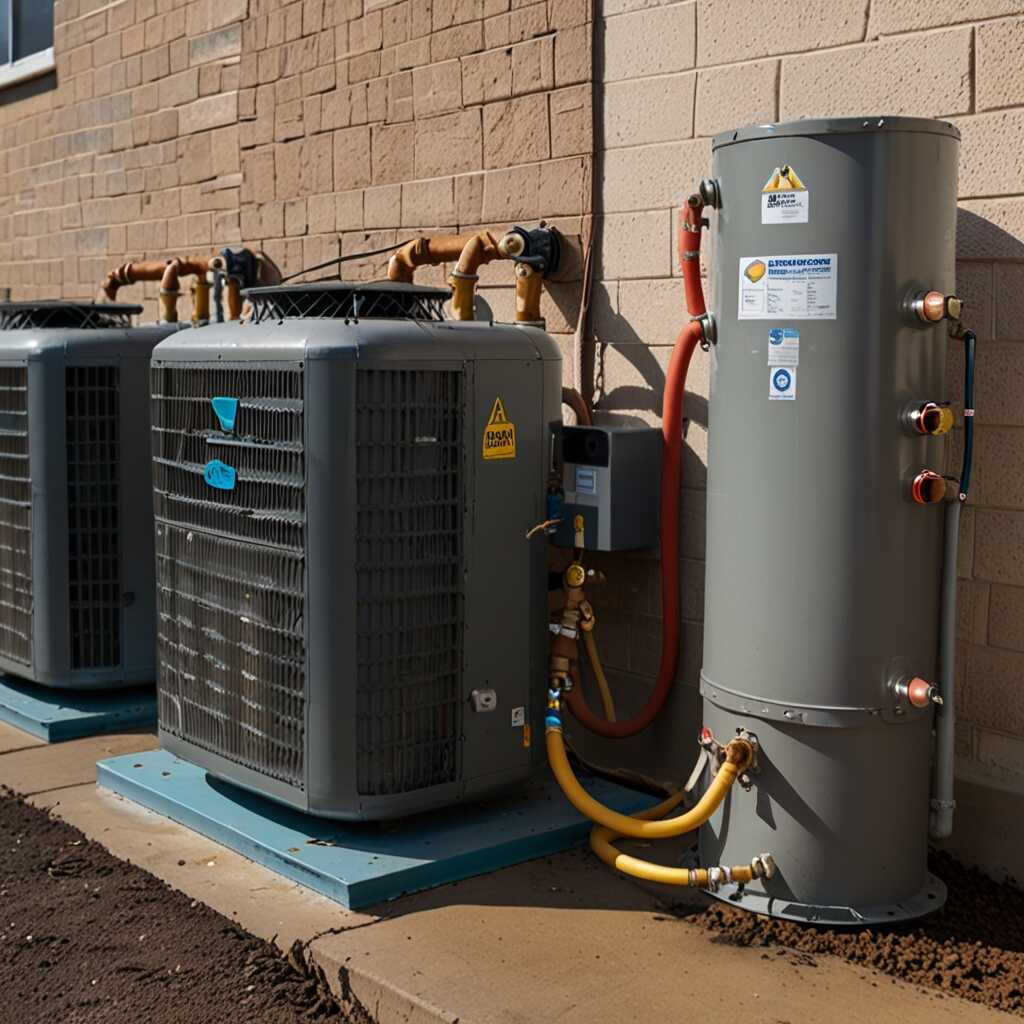Maximizing refrigerant recovery efficiency with microchannel condensers is essential for modern HVAC systems. These innovative condensers significantly enhance the recovery process by improving efficiency and reducing cooldown times. Refrigerant Recovery Pro guides HVAC professionals in utilizing microchannel condensers to optimize their refrigerant recovery practices. By providing technical insights and support, we help you achieve the best results in refrigerant management and compliance.
Introduction to Microchannel Condensers in HVAC Systems
Microchannel condensers are advanced heat exchangers designed for HVAC systems. They utilize multiple narrow channels to facilitate efficient heat transfer. These condensers enhance refrigerant recovery by improving efficiency and speed during cooling processes. Users can expect reliability and faster cooldown times, making these systems crucial in modern HVAC applications. The use of microchannel technology can significantly lower energy consumption while delivering excellent performance, especially when compared to traditional condensers.
Benefits of Microchannel Condensers in Refrigerant Recovery
Microchannel condensers offer several benefits for refrigerant recovery, including improved speed and efficiency. They can handle higher pressures and transfer heat more effectively, allowing for faster recovery of refrigerants. This is essential in enhancing the overall performance of HVAC systems. According to studies, microchannel systems can be up to 30% more efficient than traditional systems. This increased efficiency leads to a substantial reduction in energy costs and improved environmental compliance. Furthermore, the compact design of microchannel condensers eases installation and maintenance.
Performance Comparison Between Microchannel and Conventional Condensers
Microchannel condensers differ significantly from conventional condensers in several ways. They offer enhanced thermal transfer efficiency and reduced refrigerant charge requirements. Microchannel designs allow for more surface area in a compact space, helping to accelerate heat exchange. This leads to faster cooling times. The lightweight structure of microchannel condensers facilitates easy installation and maintenance, making them highly reliable for HVAC professionals. In contrast, conventional condensers can be bulkier and less efficient, leading to longer recovery times. Microchannel technology provides an essential upgrade in refrigerant recovery performance.
Understanding Thermal Transfer Efficiency in Microchannel Designs
Thermal transfer efficiency is a crucial factor determining the performance of microchannel condensers. The compact design, featuring numerous small channels, allows for a larger surface area exposed to the refrigerant. This design enables quicker heat exchange, enhancing overall efficiency in HVAC systems. Research shows that microchannel condensers can improve thermal transfer efficiency by approximately 20-30 percent compared to traditional models. This enhancement ensures that refrigerants can be recovered faster, making systems more responsive and energy-efficient. Such impressive results highlight why professionals prefer microchannel technology for reliable HVAC operations.

Mechanisms Behind Faster Cooling with Microchannel Technology
Microchannel technology significantly impacts the rate of heat exchange in HVAC systems. It enhances efficiency by utilizing a smaller, but highly effective surface area for heat transfer. This design allows for increased refrigerant flow optimization, which leads to quicker cooling. Microchannel condensers contain multiple narrow channels that promote rapid heat dissipation. This results in a lower condensing temperature reduction, ultimately enhancing the system’s overall performance. Furthermore, microchannel units are engineered with materials that ensure reliability and durability, supporting their effectiveness in refrigerant recovery practices.
Key Features of Microchannel Condensers
Microchannel condensers feature a unique design that combines multiple small channels for refrigerant flow. This structure enhances heat exchange efficiency by increasing the contact surface area. The compact nature of these units also allows for improved airflow and reduced weight, making them easier to install in various HVAC systems. In testing environments, microchannel technology has demonstrated a heat transfer rate increase of up to 30% compared to traditional condensers. This impressive performance metric is especially beneficial in environments where achieving fast cooling is essential for system efficiency.
Numerical Insights on Refrigerant Efficiency
- Microchannel condensers can increase efficiency by up to 30% compared to traditional condensers.
- A 50% reduction in refrigerant charge can be achieved with microchannel technology.
- These systems can reduce total cooling times from hours to mere minutes.
- Microchannel heat exchangers can contain up to 70% less refrigerant volume.
- They can operate effectively with a temperature range of -40°F to 140°F.
- Utilizing microchannel technology may reduce energy consumption by about 20% annually.
- These units can achieve higher heat transfer rates due to their greater surface area.

Energy Efficiency and Cost-Effectiveness of Microchannel Condensers
Microchannel condensers provide several energy efficiency benefits in refrigerant recovery. They use less refrigerant than traditional systems, which helps save energy. Their design improves heat transfer efficiency, leading to faster cooling and less energy consumption. This results in lower electricity bills over time. When comparing microchannel condensers to traditional units, studies show that users can achieve cost savings ranging between 15% to 30% in operational expenses. Additionally, these condensers have a smaller environmental footprint since they use less refrigerant and reduce greenhouse gas emissions. Data indicates that users can expect energy savings of around 20% by adopting microchannel condensers, making them a reliable choice for HVAC systems.
Understanding Microchannel Condenser Efficiency
The efficiency of microchannel condensers stems from their unique construction. They feature multiple small channels that enhance heat exchange capabilities. This design enables quicker refrigerant flow and superior cooling performance in HVAC systems. Additionally, microchannel condensers are lighter and more compact, allowing for easier installation and maintenance. Their durability and reliability contribute to longer service life and fewer replacements. HVAC professionals looking to enhance system performance will find that microchannel technology delivers impressive results. It is essential to conduct thorough testing and compare data across different systems to evaluate the full range of benefits these units offer. Refrigerant Recovery Pro provides expert reviews and comparisons that highlight the advantages of microchannel condensers.

Real-World Applications of Microchannel Condensers
Microchannel condensers are often utilized in various HVAC and refrigeration settings, enhancing efficiency and performance. In commercial refrigeration systems, such as supermarket display cases, microchannel condensers provide faster cooling, ensuring products remain at optimal temperatures. In industrial applications, these condensers have performed well in chillers, significantly reducing energy consumption. They can handle high heat loads, making them suitable for diverse job sites like data centers and hospitality facilities. Over time, real-world testing shows microchannel technology consistently provides energy savings, making it an attractive choice across industries.
Efficiency and Performance Insights in Various Industries
Microchannel condensers have been proven to dramatically enhance HVAC system efficiency and performance across various industries. In the automotive sector, these condensers are designed to fit compact spaces while delivering excellent cooling capabilities. Research indicates that microchannel technology can improve energy efficiency by up to 30% compared to traditional condensers. This increased efficiency translates into lower operational costs and reduced environmental impact. Users frequently report that microchannel systems maintain consistent performance, even under variable load conditions. This adaptability and reliability highlight their effectiveness in both commercial and residential cooling applications.
Key Advantages of Advanced Cooling Solutions
- Improved energy efficiency leads to lower operating costs for HVAC systems.
- Microchannel condensers enhance refrigerant recovery through faster cooling processes.
- These condensers save space with their compact design, ideal for tight locations.
- Fewer refrigerant leaks occur due to their robust construction and lower refrigerant volume.
- Using microchannel technology can simplify maintenance routines for technicians.
- Enhanced performance allows for quicker system response times during peak loads.
- Microchannel units are environmentally friendly by promoting sustainable refrigerant use.

Key Maintenance Practices for Microchannel Condenser Efficiency
Regular maintenance practices for microchannel condensers enhance their performance and longevity. Essential tasks include inspecting the coil for debris, ensuring that fans operate efficiently, and checking fittings for leaks. Inspect every component regularly to ensure that air flow remains unobstructed. Proper cleaning removes contaminants that can affect heat transfer efficiency. HVAC professionals should schedule maintenance checks at least twice a year to maximize reliability.
Specific Components to Inspect and Service
Focus on inspecting the coil, fan motors, and associated fittings for signs of wear or damage. Regularly clean the microchannel fins to maintain efficient airflow. These fins help enhance heat dissipation. In addition, ensure that the fan operates smoothly for optimal air circulation. Keeping an eye on the condenser’s refrigerant levels is crucial. This helps prevent performance issues and ensures efficient cooling. Regular inspection and deep cleaning offer proven results, enabling HVAC professionals to deliver the best service possible.
Understanding Regulatory Standards for Microchannel Technology
HVAC professionals must be aware of essential regulatory compliance for using microchannel condensers in refrigerant recovery practices. The Environmental Protection Agency (EPA) requires strict adherence to standards to minimize refrigerant emissions. Additionally, industry guidelines set practice benchmarks to ensure reliability and efficiency in HVAC systems. Microchannel technology enhances performance while complying with these regulations. Understanding these requirements helps improve refrigeration practices and ensures environmental safety.
Best Practices for Ensuring Regulatory Compliance with Microchannel Condensers
Implementing best practices for regulatory compliance involves regular testing and maintenance of microchannel condensers. Use reliable data and research to understand how to enhance system efficiency and performance. Training sessions for technicians on regulatory requirements improve adherence. Regular reviews of system performance help ensure compliance with environmental standards. Following these best practices not only meets regulatory requirements but also extends the life of HVAC systems while enhancing their reliability.
Identifying Targeted Use Cases for HVAC Innovations
- Residential HVAC technicians benefit from efficiency in home cooling solutions.
- Commercial building engineers appreciate the compact size for installation in limited spaces.
- Manufacturing plants favor fast cooling recovery during production cycles, making microchannel super beneficial.
- Restaurants require quick cooling efficiencies for chillers and walk-in freezers.
- Refrigeration professionals enhance compliance with environmental regulations through reduced refrigerant use.
- Schools and universities looking to upgrade energy systems find microchannel technology appealing.
- Data centers demand reliable and efficient cooling for server maintenance; microchannels deliver optimum results.
Emerging Trends in Refrigerant Recovery and Future of Microchannel Technology
Recent developments in microchannel technology for refrigerant recovery include enhanced designs that improve efficiency under various conditions. Microchannel condensers can handle higher pressures and lower refrigerant volumes. This evolution leads to faster cooling and better energy use compared to traditional systems. HVAC professionals should expect continuous testing to validate their performance. By embracing these advancements, they ensure reliable system operation. In 2025, a significant shift towards these technologies is anticipated, as many users recognize their advantages. Most systems are likely to adopt microchannel technology due to proven efficiency and reduced environmental impact.
Efficiency Improvements in Microchannel Condensers
Microchannel condensers offer notable efficiency improvements in refrigerant recovery systems. These condensers utilize smaller tubing and enhanced heat exchange surfaces, resulting in faster cooling times and reduced energy consumption. Users can achieve quick recovery rates, making them ideal for HVAC applications. Microchannel technology also fosters improved reliability and lower refrigerant charge requirements, thus minimizing waste. Studies indicate that systems using microchannel technology can see efficiency improvements of up to 30% compared to traditional condensers. As HVAC industry trends shift towards sustainability, these performance standards will guide new installations and upgrades.